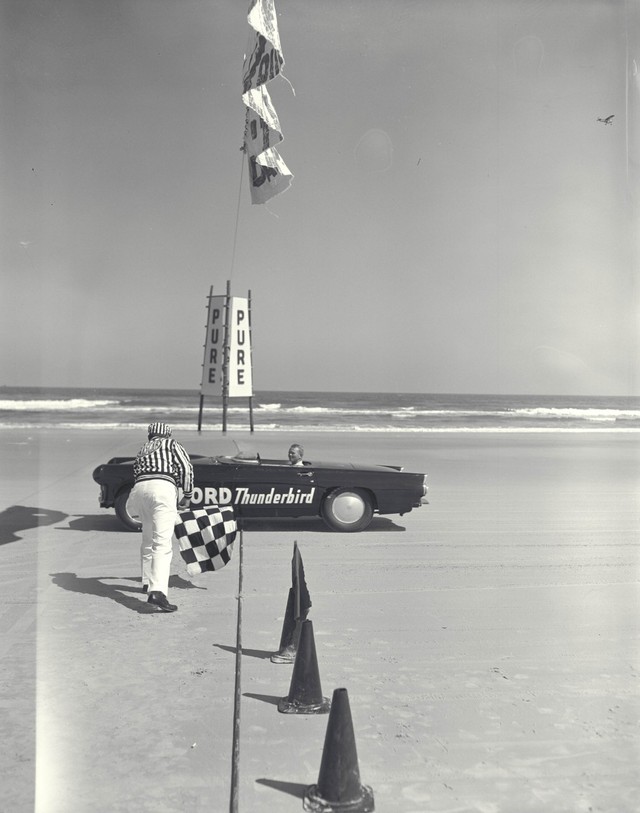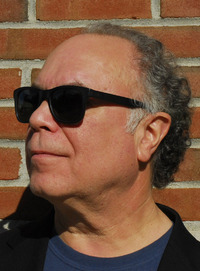RACING IN A VACUUM ON FULL DISPLAY THIS PAST WEEKEND.
 Monday, July 10, 2017 at 09:52AM
Monday, July 10, 2017 at 09:52AM By Peter M. DeLorenzo
Detroit. I have been called anti-racing by many of my critics because of my frequent commentaries calling out racing for when it performs below expectations, as if deigning to criticize a sport that's in desperate need of a jolt of common sense is somehow out of line, or even treasonous. I don't see it that way, obviously.
Having been immersed in and around racing from a very young age, I have seen the sport at its best, but I have also observed it at its absolute worst. Racing is like that it seems. The moments when the sport of motor racing soars are fleeting, at best. Unfortunately, those moments are punctuated all too often by long stretches of mediocrity and flat-out stupidity. This isn't a knock on racing per se, because it happens in all sports at one time or another. But for me it's particularly galling when the sport's caretakers and overlords who are, for the most part, exceedingly smart, acquiesce to going along to get along just to keep the sport moving rather than meet its burgeoning problems head on.
I have called this "racing in a vacuum" almost from the very beginning of this website. I define it as racers and members of the racing community being lost in a world that only makes sense to those who are knee-deep in it, rendering common sense and objectivity as needless distractions. In other words, as long as the players in question have their sponsorship deals in place for this season and the next, the bigger picture is anathema and inconsequential.
Let's take the past racing weekend for instance, starting with F1. Despite the breathless reporting on Twitter filled with multiple exclamation points, the Austrian Grand Prix was a complete snoozefest. Was it surprising? Not to me. F1 has become an exercise in rote regurgitation, a facsimile of racing that has been sanitized to the nth degree. Any untoward variables have been purged, any discomforts to the competitors have been neutralized, and the weekends have become so predictable and boring that it's almost excruciating to watch. But yet, the powers that be in F1 - and its participating manufacturers - think that everything is fantastic and there is nothing to worry about. But then again what would they say other than that everything is just perfect? When you're in the vacuum-sealed "bubble" that is F1, Alfred E. Neuman's "What, me worry?" isn't just a daily mantra, it's an ingrained ethos that's glorious in its intransigence.
The problems in F1 are so deep and pervasive that I don't expect anything to change. Yes, they are talking about new engines for 2021, but, really? When the one single thing that has defined the sport in the past - the shrieking, sheet-ripping sound of the engines - has been dumbed-down to the point that it resembles finely-tuned flatulence? 2021? This is the very definition of racing in a vacuum, and the powers that be in F1 are comfortably smug in their belief that not one thing is wrong with their sport and no sense of urgency is needed. Which is pathetic.
And then there's NASCAR. As I wrote a couple of weeks ago in my column, "The 2018 NASCAR Schedule Revised," the powers that be in Daytona Beach are in such desperate need of a jolt of reality that the situation is beyond desperate. I am not going to delineate everything wrong with NASCAR today, because I've written about it repeatedly. Suffice to say while F1 has raised "racing in a vacuum" to an art form, NASCAR has enthusiastically burnished it as part of its standard operating procedure. In short, the races are too long and too predictable, the death march of a schedule is repetitive and interminable, and in NASCAR's zeal to equalize competition, the cars have become uninteresting and damn-near un-raceable. Brad Keselowski, who along with Kevin Harvick is one of the genuine deep thinkers among the NASCAR drivers, said after the tedious Kentucky race that the cars are a long way from being right, and even though NASCAR is allegedly working on a "Gen 7" car, who's kidding whom here? A new car is years down the road. And just how different will it be? Racing in a vacuum is part and parcel of the NASCAR ideal. No outside perspective is needed or wanted. And as long as the participating manufacturers continue to act as NASCAR's chief enablers, nothing will change anytime soon.
And finally, there's IndyCar. Look, I so desperately want IndyCar to succeed. I consider the Indianapolis 500 and the IndyCar race at Road America to be two of the premier races on this soil. As for this past weekend's race at the Iowa Speedway, which was a feel-good story that included Helio Castroneves' first win in three seasons (see this week's "The Line" -WG) and the noteworthy performance of JR Hildebrand, the obvious question is: Where were the spectators? When some of the best drivers in the world are wheeling their blistering-fast IndyCar machines on a 7/8-mile oval at spectacular, breathtaking speeds and yet attendance was, to put it charitably, sparse, how is this even remotely sustainable?
When it comes to IndyCar, "racing in a vacuum" couldn't have been more clear than at the Iowa Speedway late Sunday afternoon. The team owners, drivers and crews were all engaged and switched-on, immersed in what they do and ensconced deep in the IndyCar "bubble." But how can they continue to be oblivious to the disappointing turnouts? How long can the powers that be at IndyCar and the team owners continue to operate by selling sponsors on the Indy 500 while having them kinda-sorta look the other way when it comes to the TV and in-person attendance numbers for the rest of the year?
Do the IndyCar management and the key team owners look at the "big picture?" Yes, of course they do, however it's clear that it's much easier to worry about the immediacy of problems associated with securing sponsors for the next twelve months than it is to step back and chart a new course for the sport.
The only bright light from last weekend's racing weekend was the spectacular show put on by IMSA at the Canadian Tire Motorsports Park (formerly known as Mosport), which featured cracking good road racing at its best (See "The Line" -WG) . When IMSA is on, especially in the GTLM class, it's the best pure road racing extant.
And to a much lesser degree, the Global Rally Cross races from Indianapolis were compelling too. GRC is evolving, and it seems to be on the right track, but again, better venues, longer courses and longer feature races are in order.
The reality for the racing world is that a palpable sense of ennui is too often present. It could be better. It should be better.
And that's the High-Octane Truth for this week.
Editor's Note: Many of you have seen Peter's references over the years to the Hydrogen Electric Racing Federation (HERF), which he launched in 2007. For those of you who weren't following AE at the time, you can read two of HERF's press releases here and here. And for even more details (including a link to Peter's announcement speech), check out the HERF entry on Wikipedia here. -WG
Publisher's Note: As part of our continuing series celebrating the "Glory Days" of racing, we're proud to present a noteworthy image from the Ford Racing Archives. - PMD

(Courtesy of the Ford Racing Archives)
Daytona Beach, Florida, 1956. In a staged Ford PR photo, Chuck Daigh is seen crossing the finish line in his heavily-modified Thunderbird during the speed trials. Earlier (and with helmet on) Daigh won the Standing Start Acceleration Run with a speed of 88.779 mph. He also set a time of 40.5 sec. in the 0 to 150 mph test. The Ford V8 was equipped with dual 4-barrel carburetors and put out 260HP.






